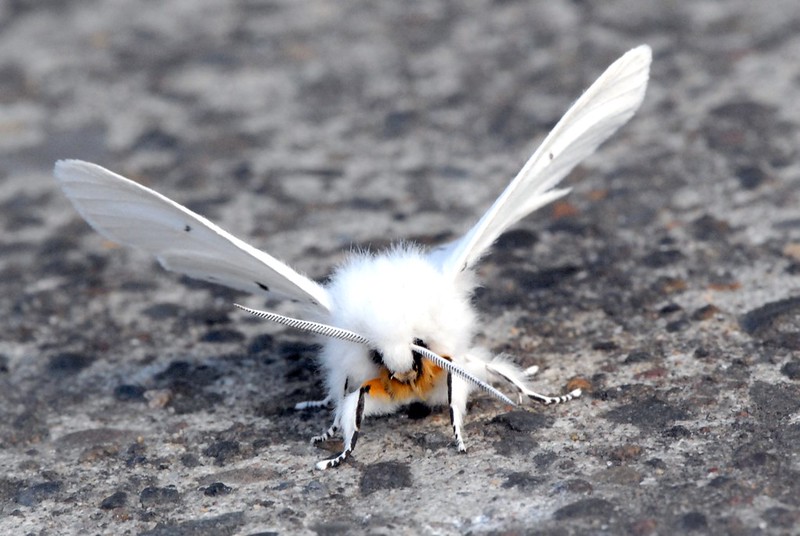White Ermine Facts
- The gorgeous White Ermine also forms a bit of a puzzle. That’s because it presents a few challenges for entomologists. This holds true since it does not always display the same color patterns. This further sometimes makes it hard to identify.
- Like many species in its region, the first formal scientific recognition of it as a distinct species occurred due to the work of one man. The renowned Swedish zoologist made that acknowledgement of it as a separate species in the year 1758.
- The common name applied to the invertebrate isn’t the only one it’s know by, however. That’s because professional researchers typically refer to it by its formal scientific name. That’s the somewhat hard to pronounce name of Spilosoma lubricipeda.
- This seemingly delicate Lepidoptera also conceals a dangerous secret. It serves as an excellent example of how beauty often conceals danger in nature. This insect has few, if any, natural predators because its body contains relatively powerful toxins.
- Due to its numbers and extensive range, the IUCN does not currently have a listing for it. Yet the Catalogue of Life does have a listing for it. While its numbers currently seem stable, many fear for its future, due to changing conditions within its habitat range.
Related Articles
White Ermine Physical Description
The beautiful White Ermine represents a comparatively moderate-sized species of moth. Individuals typically attain an average wingspan of between 1.3 and 1.9 in (34-48 mm). While many moths display some degree of sexual dimorphism, it does not.
The wings usually display a milky white color, yet individuals vary greatly in other ways. The most noteworthy difference between individuals remains the presence of black dots. Most individuals present many, but others present few, or even none at all.
The antennae form yet another trait which sets this specimen apart from many other moths. That’s because, in its case, these attain much greater lengths relative to body size. The precise evolutionary reason for this, however, currently eludes researchers.
The stunning White Ermine further catches the eye due to another reason. That’s the contrast between the color patterns of its wings, and that of its abdomen. This part of the marvelous arthropod typically displays as a moderately bright orange in color.
- Kingdom: Animalia
- Phylum: Arthropoda
- Class: Insecta
- Order: Lepidoptera
- Family: Erebidae
- Genus: Spilosoma
- Species: S. lubricipeda
White Ermine Distribution, Habitat, and Ecology
Quite fortunately, the lovely White Ermine evolved as native to a comparatively broad swathe of the globe. While broad, however, that range also qualifies as highly specific. More specifically, the arthropod only appears naturally in the temperate zone of Eurasia.
That highly specific range of habitation extends from Europe through several other countries. These include those of southern Siberia and Kazkhstan, to those of China, Korea, and Japan. Within that range, though, it thrives in comparative abundance, for now.
It’s also impressively adaptable. That’s true since it’s adapted to several types of habitats. These include hedgerows, heathland, moors, forests, and even gardens. This species typically flies between May and September, depending on the precise area.
The larvae of the White Ermine feed on a wide variety of plants, most typically herbaceous ones. The exact varieties of these naturally vary between regions. Due to the presence of toxins in its body, the species has few natural predators of its own.
Though the species still appears rather numerous, many people fear for its future. Like many invertebrates, it remains especially vulnerable to climate change. Several other factors, such as habitat loss also threaten its continued existence as a species, though.
Species Sharing Its Range
Check out our other articles on 5 Rare Mind-Blowing Cloud Types, Javan Rusa, Kurinji, Pingualuit Crater Lake, Green Anaconda, Bornean Flat Headed Frog, Kakapo, Weedy Seadragon

